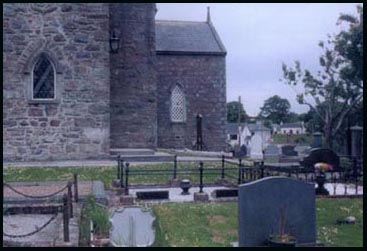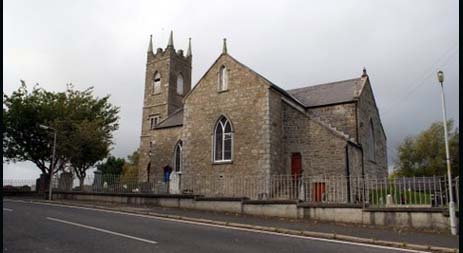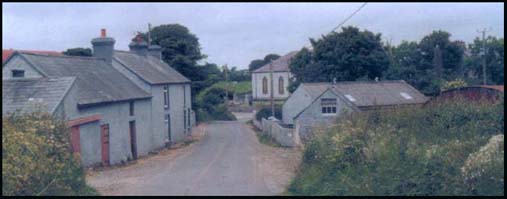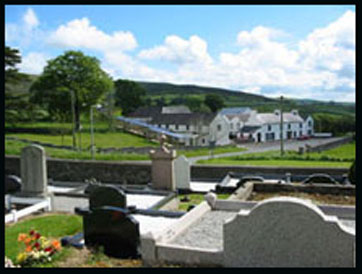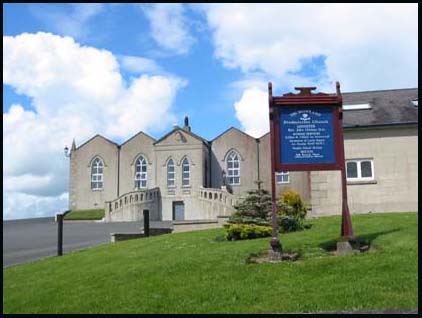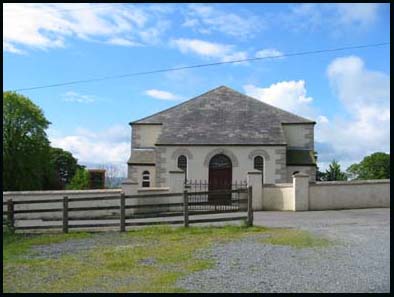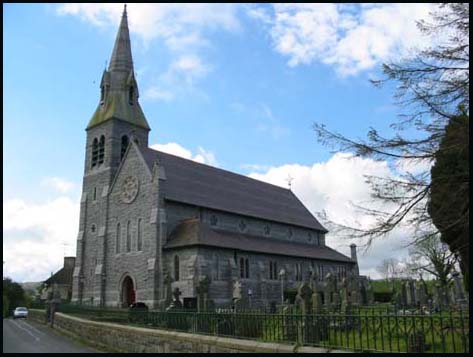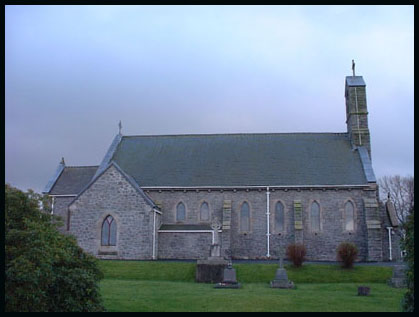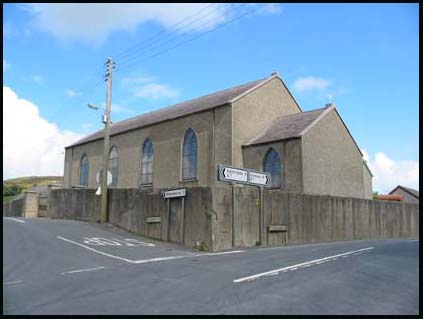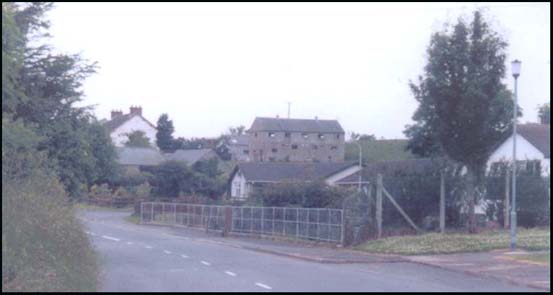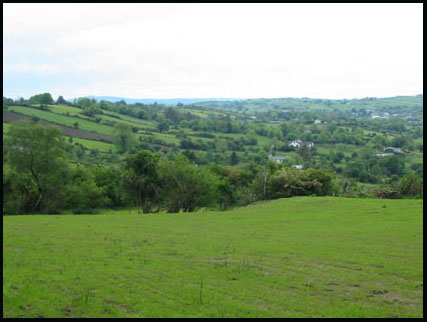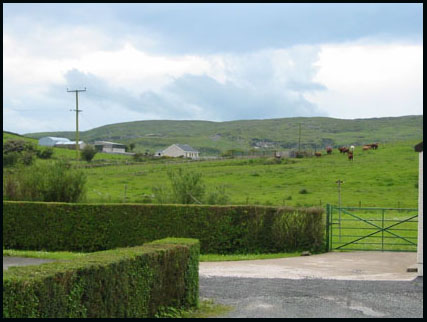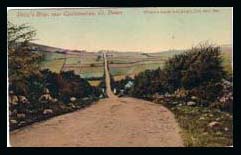|
Catholic
Church of Immaculate Conception-
Upper Drumgooland
in Leitrim townland
on the road between Castlewellan and Dromore
The church was originally built on land donated by the McCartans
in 1786 on this site of an old Mass Rock, with repairs and additions
made in 1835. The McCartans family contributed generously to the
building and maintenance of the church. The average attendance
at that time was 300 people. A Sunday School was held in the church
in summer attended by 200- 400 children. The parish priest in
1836 was Rev. Michael O'Laughlan of Ballydrummon . The church
was then described as a plain, slated, rectangular building with
open seats and a gallery and an average attendance of 300 people.
A plot of land was bought beside the church for burials in 1840.
It was rebuilt by Rev. Arthur J. Finnegan in 1871 at a cost of
£2891.19.0 and described as one of the most beautiful examples
of Gothic architecture in Dromore Diocese. The spire was completed
in 1874. The architect was a young Belfast man named Timothy Heavy
and the surveyor was Henry McConnell. Donations were received
from Mrs. McAvoy ( mosaic floor, marble steps, Stations of the
Cross and the Lourdes stained glass window) ; Mr. & Mrs. Owen
McCartan (mosaic floor, marble font and brass gate) Mr. John Owens
(stained glass window) . The chief celebrant was Most Rev. Dr.
Mulhern, Bishop of the Diocese. Also present were Canon O'Hagan
of Lurgan, Canon Rooney of Hilltown, Canon Doyle of Laurencetown,
Rev. Edward McGivern of Leitrim, Rev. James Fitzpatrick of Newry,
Rev. Henry McGivern of Lurgan, Rev. Michael McCartan of Loughbrickland,
Rev. F.G. O'Hare of Banbridge; Mr. Arthur McAvoy of St. Colman's
College, Newry . The church was completely redecorated in 1924
and renovated in 1998.
Parish Priests in Upper Drumgooland Parish;
1784- 1785 Rev. Fergus Rooney; 1785 - 1808; Rev. Patrick McKay;
1808-1825; Rev. Peter McEvoy; 1825-1827; Rev. Thomas O'Hare; 1827-
1846 Rev. Michael O'Loughlin; 1846- 1851 Rev. John Mooney; 151-1855
Rev. Arthur Finnegan; 1885- 1906 ;Rev. John Lowry; 1906-1907 ;Rev.
Andrew Lowry as administrator; 1907-1912; Rev. Patrick Quail;
1912-1914 ; Rev. John Quail; 1924-1931 Rev. Edward McGivern; 1931-1932
Rev. John Carr; 1932-1936 Rev. John Doran; 1936-1941 Rev. David
Gallery; 1941-1952 Rev. Joseph Byrne; 1952-63 Rev.Michael McCartan;
1963-1993 Rev. James Mooney; 1993-1995 Rev. James Kerr; 1997-
2002 Rev Lionel Murray; 2002 Rev. Frank Lyons.
Curates in Upper Drumgooland Parish;
1844-1845 John MacDonnell; 1848- 1849 ; Rev. Daniel Mooney; 1849-1850
; Rev. John Mooney; 1864-1870 ; Rev. John McGrath; 1871-1874 ;
Rev. William Kearns; 1874- 1884 ; Rev. Joseph Kearns; 1888- 1903
; Rev. Michael MacClory; 1903-1904 ; Rev.John MacGivern; 1904-
1905; Rev. Henry McGivern; 1905-1907; Rev. Andrew Lowry; Rev.
James Dargan 1910-1912 ; Rev. James Dargan; 1912-1913 ; Rev. Patrick
Keenan; 1913-1916 ; Rev. Michael O'Hare D.D.;1916-1918 ; Rev.
Patrick J. Markey; 1918- 1924 ; Rev. Michael Brown; 1924-1925;
Rev. Patrick F. Boyd; 1929- 1931 ; Rev. John J. Branaghan.
A newspaper article from the Down Recorder:
building sermon 22 Jan 1842; many parishioners starving during
famine 17
Oct 1846*
The graveyard has mainly 20th century graves.
http://registers.nli.ie/
has registers to view 1827-1884; PRONI & NLI have baptisms,
marriages & burials 1832-1880;UHF has baptisms 1827 -1900
& marriages 1827 -1900; LDS Film # 0926082 has baptisms 26
May 1827- 28 Dec 1800, marriages 9 Aug 1827- 28 Dec 1880, burials
6 May 1828- 2 Nov 1880
|
